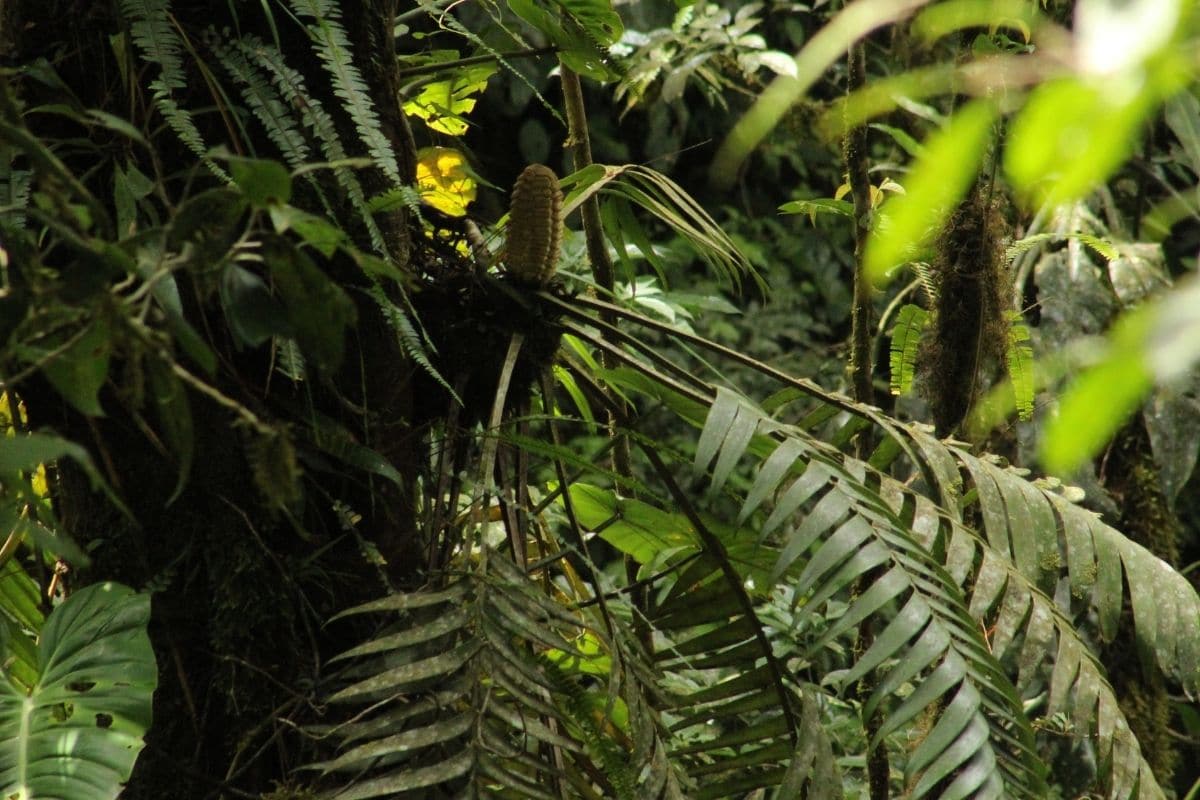

How does the plant manage to keep and spread its seeds at such a high altitude?
Zamia pseudoparasitica is a special plant in several respects. For example, it only occurs in the mountainous cloud forests in western Panama. But what is even more special is that it is the only plant from Zamiagenus that does not grow on the ground. Instead we find Z. pseudoparasitica at a height of about 7 to 20 meters, where it clings to tree branches with its roots.
Seeds
And the latter, of course, begs the question of how this plant—which produces seed-filled cones—disperses its seeds. Because due to gravity you would expect those seeds to end up on the ground. But somehow that doesn’t happen and the plant manages to multiply high in the trees. How is that possible?
New research
Scientists didn’t even know for a long time. But a new study – published in the magazine Ecology & Evolution – seems to shed new light on the issue. For example, tentative indications have been found that the olingo has something to do with it.
Cameras
The researchers base this tentative conclusion on a rather labour-intensive study, in which high in the trees of the cloud forest, some distance from Z. pseudoparasitica cameras were installed. The researchers hoped to use those cameras to record which animals interacted with the plant – and in particular with its seeds, of course.
Olingos
The researchers then saw various animals pass by on the images. As many as seven different mammals visited the branches on which Z. pseudoparasitica grew. Some of them paid no attention to the plant. Others—such as capuchin monkeys and possums—inspected or licked the seed-filled cones displaying the plant. But none of these animals actually took seeds. And so the mystery continued. Until the researchers olingos (Bassaricyon gabbii) came on the scene. These raccoon-like animals, which are mainly active at night, not only inspect the cones, but also bit into them. And once the cones opened, the olingos collected up to four seeds at a time. “The mountainous forests of western Panama are very unique and filled with many species not found elsewhere,” said researcher Kristin Saltonstall. “It’s exciting to capture the interaction between such a special plant and an animal that we also know very little about.”

Using cameras, researchers at various places in the cloud forest recorded how olingos carried seeds of Z. pseudoparasitica. Image: Claudio Monteza, Smithsonian Tropical Research Institute and Max Planck Institute for Animal Behavior.
“It is possible that the olingos carry the seeds to their burrow (which is high in the trees, ed.),” said researcher Claudio Monteza. “If that’s the case – and so we don’t know for sure – it might help explain why this is the only one.” Zamiaspecies that lives in the tree layer.” The idea then is that some of the seeds that the olingos store elsewhere in that tree layer will re-emerge. And so the plant – aided by the olingos – can therefore spread high in the trees, without being somewhat hindered by gravity.
Whether this is actually the case remains to be seen from further research. The researchers do have ideas about how they want to approach this follow-up research. “For example, we can mark the seeds with the help of bioluminescence, wait for the olingos to remove the seeds and then go looking for them again at night (when the seeds emit light thanks to that bioluminescence and are therefore clearly visible, ed.).” To be continued!
Source material:
†Caught red handed – The mystery of an unusual Panamanian plant’s dispersal– Smithsonian Tropical Research Institute
Image at the top of this article: Pedro Luis Castillo, Smithsonian Tropical Research Institute